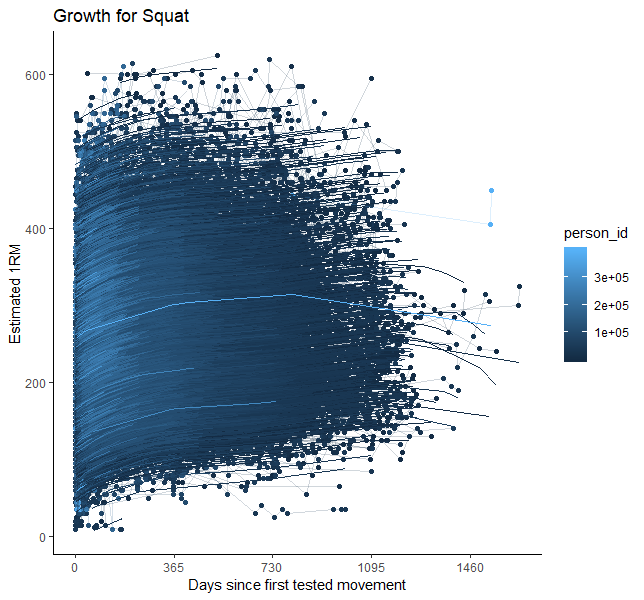Volt and Big Data “In the Wild”: The World’s Largest Strength Training Study
/Quality training programs based on sound scientific principles as outlined in the NSCA Essentials of Strength and Conditioning textbook, the American College of Sports Medicine position statement on resistance training, and several systematic reviews and meta-analyses outlining the evidence and best practice of strength and conditioning have always been at the heart of Volt Athletics. And, we continue to assess and refine our programming so that we can take it to the next level. Part of this process is through examination of data from our users.
Since the new Volt app was launched in 2018, there have been over 1 million users (and growing!) who input data on sets, repetitions, and load on a daily or weekly basis. For a moment, just stop and think of the total number of data points! Indeed, this is the era of Big Data. Big Data is now a term used in many sectors including business, health care, banking, government, manufacturing, retail, education…and also sports, as first popularized by the book and movie Moneyball. And, just as professional sports teams are data mining and using predictive analytics to improve performance, so are the software development, data science, and sports science teams at Volt.
Smartphones and the Living Lab
As mentioned, several sectors are taking advantage of information technology, and in particular, the data being generated from smartphones. Did you know that nearly 70% of adults in developed countries carry smartphones?
In the context of physical activity and fitness (and related to Volt), there are several fitness apps and/or wearable technologies that interface with smartphones to provide user feedback on lifestyle behaviors such as physical activity level, sleep, and diet.
The smartphone allows for data collection “in the wild” instead of the typical research lab, and this can be linked to the research concept of the “living lab.” What is a living lab? In contrast to a traditional research laboratory or a highly structured or controlled experiment, a living lab is a real-life use case that is a user-centered, open-innovation ecosystem often operating in a territorial context (e.g., neighborhood, organization, city, region) while integrating concurrent research and innovation/technological processes (from Wikipedia). Basically and simply, data collection occurring in real-world situations.
Let’s take a look at an example and then discuss how this applies to Volt.
Physical Activity “In the Wild”
Recently, Stanford University researchers partnered with Azumio, a mobile health company that specializes in biometric mobile technology, on a project sponsored by the National Institutes of Health. Through its comprehensive health tracking app called Argus, Azumio will provide Stanford researchers with de-identified data on physical activity, heart rate, diet, and sleep along with demographic and geographic data from 5 million users worldwide. Recently, the first study from this partnership was published in the prestigious journal Nature. The results showed physical activity variability across the World, and population differences by age, gender, weight status and time of day using 68 million days of minute-by-minute step recordings from 717,527 users. Here’s a quick look at the average daily steps from countries across the World.
Image credit: Tim Althoff
Strength Training “In the Wild”
At Volt, we have a similar opportunity to the project described above. But instead of examining habitual physical activity levels or the relationship of physical activity with body mass index, we are beginning to dig deeper into the responses to strength training and the influence of acute program variables, demographic factors and recovery/wellness variables (sleep, soreness, stress, etc.) on strength training and the development of muscular strength. In addition, we are examining the effectiveness of our patent-pending Smart Sets technology and refining our AI engine, Cortex.
In May, we will present some of our findings at the American College of Sports Medicine meeting in Orlando. Although it is well established that if you lift weights, you get stronger, previous research was from small sample sizes (16-50 subjects) in university studies that last about a semester (3-4 months). We will report on the estimated 1-RM squat from 5,676 individuals from 4 months to 4 years. Here’s a sneak-peek.
And as Volt CEO Dan Giuliani likes to say...
“And the best part is, we’re just getting started.”
Join over 1 million coaches and athletes using Volt's AI-powered training system. For more information, click here.
Learn more about Dr. Eisenmann | @Joe_Eisenmann




